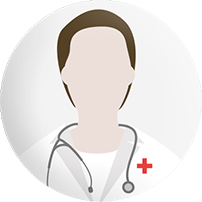Objectives: Rosacea represent an important opportunity for public health.
Introduction: Rosacea represent a chronic inflammatory skin disease, with an increasing prevalence, and multiple risk factors (genetics, age, phototype, alcohol consumption and ultraviolet exposure).
The lesions in rosacea are erythema, papules, telangiectasia, edema, pustules, or a combination, with a specific localization (central face - cheeks, forehead, chin, and nose) and associated with symptoms (facial flushing, stinging , pain, burning sensations).
Materials / method: The etiopathogeny of rosacea is unknown, but age, phototype, gender, alcohol consumption, genetics, ultraviolet exposure and infections (Demodex with Bacillus oleronius, Staphylococcus epidermidis, Helicobacter pylori) are strong involved in the development of the disease. The main triggers of the disease are heat, alcohol, sunlight, hot beverages, stress, medications and some foods.
Rosacea is frequently associated with systemic diseases (neurologic and cardiovascular disorders, diabetes and metabolic disorders, autoimmune diseases and digestive disorders).
Results: The triad of rosacea care are represented by education (about triggers factors, diet, proper use of photoprotection methods), skin care, and treatment (local treatment and general treatment, laser treatment).
Diseases associated with Rosacea are serious and with important consequences both for patient and medical systems, and the early diagnosis and correct treatment could reduce both the burden of these systemic diseases and the development of serious complications.
Conclusion: In consultation for rosacea, the dermatologists have the big opportunity to referral the patients in order to have a comprehensive evaluation of general health, especially on possible associated diseases. In conclusion, rosacea need a holistic approach with a strong collaboration between doctor and patient, and a comprehensive care to patients with rosacea, and through early diagnosis and treatment of associated diseases represent an important opportunity for public health.
Divulgação de informações
Você recebeu algum patrocínio para sua pesquisa neste tema?
Não
Você recebeu algum tipo de honorário, pagamento ou outra forma de compensação por seu trabalho neste estudo?
Não
Você possui relação financeira com alguma entidade que possa competir com os medicamentos, materiais ou instrumentos abordados no seu estudo?
Não
Você detém ou pediu a registro de patente para algum dos instrumentos, medicamentos ou materiais abordados no seu estudo?
Não
Este trabalho não recebeu nenhum patrocínio direto ou indireto. O mesmo está sob a própria responsabilidade do seu autor.











